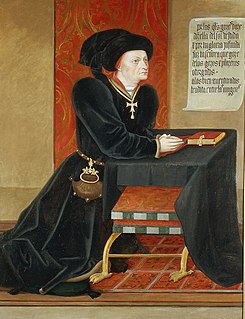
Íñigo López de Mendoza y de la Vega, 1st Marquess of Santillana was a Castilian politician and poet who held an important position in society and literature during the reign of John II of Castile.
De la Vega is a surname in the Spanish language, most of its bearers belonging to the nobility. It means "of the meadow" and may refer to:

María Díaz de Padilla was the mistress of King Peter of Castile.
Alfonso of León, Lord of Molina was an infante (prince) of León and Castile, the son of King Alfonso IX of León and his second wife Queen Berengaria of Castile. He was the brother of King Ferdinand III of Castile and León, and father of Queen Maria of Molina, wife of King Sancho IV. He became Lord of Molina and Mesa after his first marriage to Mafalda González de Lara, the heiress of those lands.

Salvador González was a Castilian nobleman active in the regions of La Bureba and Burgos in the middle third of the eleventh century. His origins are obscure, and he thus stands at the head of his lineage, the Salvadórez. He remained loyal to the ruler of Castile throughout his career, even when it meant a loss of position after the Bureba was acquired by neighbouring Pamplona.
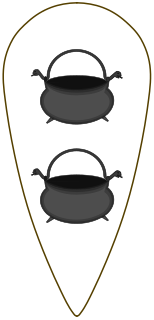
The House of Lara is a noble family from the medieval Kingdom of Castile. Two of its branches, those from the Duke of Nájera and from the Marquess of Aguilar de Campoo were considered Grandees of Spain. The Lara family gained numerous territories in Castile, León, Andalucía, and Galicia and members of the family moved throughout the former Spanish colonies, establishing branches as far away as the Philippines and Argentina. The House of Lara were most prominent in the history of Castile and León from the 11th to the 14th century. For example, Álvaro Núñez de Lara served as regent for Henry I of Castile. They were dispossessed of much of their land by Peter the Cruel, but most was returned by Henry II.
Gómez González de Manzanedo was a Castilian magnate who governed Calahorra and defended the border with Navarre in the 1150s and 1160s. He spent three periods in the neighbouring Kingdom of León.
Blanche of Castile was by birth a member of the Castilian House of Burgundy. She was the only child of Infante Peter of Castile, Lord of Los Cameros and Infanta Maria of Aragon.
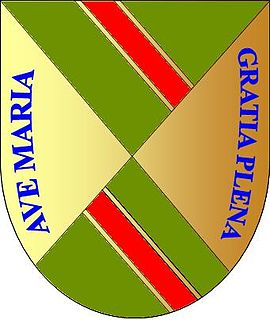
Garci Lasso de la Vega II, also known as “El Joven” was the son of Garci Lasso de la Vega "El Viejo" with his first wife, Juana de Castañeda. He commanded Castillian troops against Navarra in the Battle of Río Salado of 1334. After distinguishing his valor, he was appointed as the highest royal official to the court of Fadrique Alfonso de Castilla, master of the Order of Santiago and son of Alfonso XI of Castile. He was later appointed Adelantado of Castile through the patronage of Juan Núñez de Lara. After the death of his patron, he sought refuge in Burgos, fearing the wrath of Juan Alfonso de Alburquerque. King Pedro I and his loyal men found him there where he suffered an atrocious death witnessed by the king in 1351, as reported by Pero López de Ayala in his chronicle on the reign of this monarch.

Pedro Ruiz de Villegas y Cevallos II was a Spanish noble baron in the service of the Kingdom of Castile and a member of the Order of Santiago. He was the head of the House of Villegas and a descendant of the houses of Cevallos and of Lucio. As the majorat of his own heraldic crest, he received titles over Villegas, Manquillos, Castillo Pedroso, Moñux, Pedrosa del Páramo, Manciles, Valdegómez and the palace of Sasamón. For his service in the First Castilian Civil War, and his role in the destruction of the Blanche of Bourbon league he received the castle of Caracena, and was named high adelantado of Castile in 1354. A year later, Peter of Castile would execute him in the village of Medina del Campo.

Garci Lasso Ruiz de la Vega was a Spanish noble from Cantabria and one of the pillars in the history of the prominent contemporary House of Garci Lasso de la Vega or Garcilasco de la Vega. As the eldest son Garci Lasso Ruiz de la Vega succeeded his father, Garci Lasso de la Vega II, as the head of his household.

Leonor Lasso de la Vega was a Spanish noble woman from Cantabria and head of the prestigious House of Lasso de la Vega from 1367 - 1432.

Gonzalo Rodríguez Girón, also known as Gonzalo Ruiz Girón, firstborn son of Rodrigo Gutiérrez Girón and María de Guzmán, was one of Castile's wealthiest and most powerful nobles. He was based in Tierra de Campos, and was among the most loyal supporters of King Alfonso VIII of Castile, Berengaria of Castile, and later of King Ferdinand III.

Juan Núñez I de Lara y León, also known as "el Gordo" or "the Fat", was a Spanish noble. He was the head of the House of Lara, Lord of Lerma, Amaya, Dueñas, Palenzuela, Tordehumos, Torrelobatón, and la Mota. He was further known as Señor de Albarracín through his first marriage with Teresa Álvarez de Azagra.
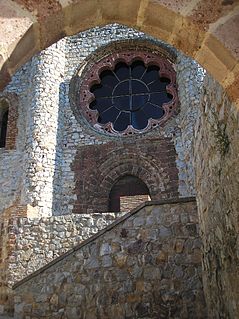
Rodrigo Gutiérrez Girón was a magnate and ricohombre from Palencia who played a key role in the Medieval history of the Iberian Peninsula. He was the first one of his lineage to add Girón to his patronymic. Owner of vast holdings and estates, Rodrigo and his relatives formed one of the most powerful clans in Tierra de Campos since the time of the Banu Gómez.
Gonzalo Núñez was an early member of the House of Lara, whom modern historians and genealogists agree is the first clearly identifiable member of this lineage. The House of Lara was one of the most important ones in the kingdoms of Castile and León and several of its members played a prominent role in the history of medieval Spain. Possibly related to the Salvadórez, the sons of Salvador González and, by marriage, to the Alfonsos from Tierra de Campos and Liébana, as well as the Álvarez from Castile, Gonzalo was most probably a descendant of the Counts of Castile.
Guillén Pérez de Guzmán, a member of the House of Guzmán, one of the most aristocratic of the Kingdom of Castile, was the maternal grandfather of Queen Beatrice of Castile, Queen Consort of Portugal as the wife of King Alfonso III. His father was Pedro Rodríguez de Guzmán—killed in the Battle of Alarcos on July 18, 1195and son of Rodrigo Muñoz de Guzmán—and Mahalda With his brothers Nuño and Theobald, he fought alongside King Alfonso VIII at the decisive Battle of Navas de Tolosa in 1212. Even though his kinsmen supported the Laras during the crisis that ensued after the death of King Alfonso VIII, Guillén, probably because of his marriage to a member of the Girón clan, supported Queen Berengaria of Castile and her son, the future king Ferdinand III.
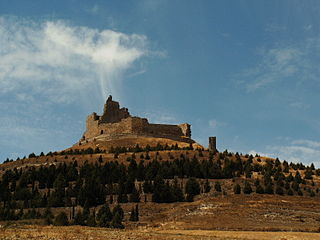
Gutierre Fernández de Castro was a nobleman and military commander from the Kingdom of Castile. His career in royal service corresponds exactly with the reigns of Alfonso VII (1126–57) and his son Sancho III (1157–58). He served Alfonso as a courtier after 1134 and as majordomo (1135–38). He was the guardian and tutor the young Sancho III from 1145. Before his death he was also briefly the guardian of Sancho's infant son, Alfonso VIII.
Rodrigo González Girón, eldest son of Gonzalo Rodríguez Girón and his first wife, Sancha Rodríguez, was a nobleman from Palencia. After the death of his father in 1231, he was the head of the Girón family.










